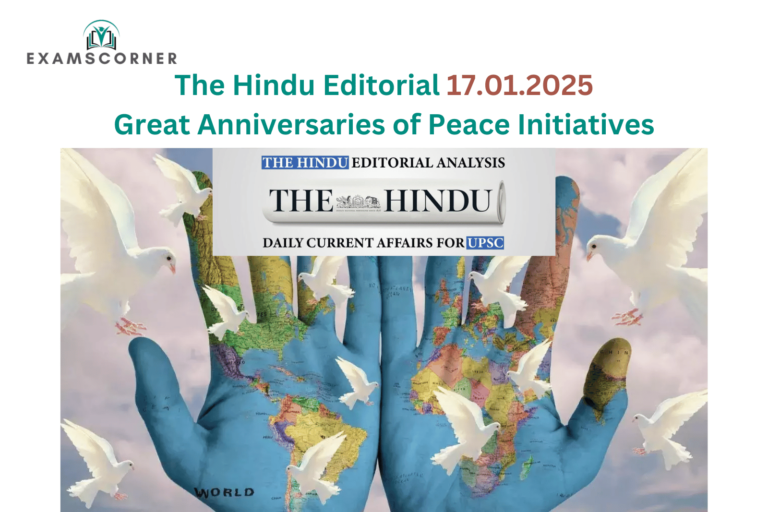Introduction
In the moments before the deadliest tsunami in India’s history struck its southeastern shores on December 26, 2004, life carried on as usual. People were laughing, crying, arguing, loving, lamenting, or celebrating—unaware of the catastrophe about to unfold.
Wildfires and Exhilaration in Los Angeles
Before the Wildfires
Similarly, moments before wildfires ravaged Los Angeles’ stunning landscapes, its residents were immersed in the beauty of their surroundings—the blue sky, the azure sea—shopping, debating their future under figures like Trump and Musk, or simply living their lives.
The Aftermath
Those affected by such disasters often say, “We could never have imagined….” While these calamities are attributed to nature’s capriciousness, which is neither predictable nor preventable, other catastrophes are human-made and avoidable.
Scientific Vision of the Past
Los Alamos and the Nuclear Test
Human imagination and foresight have often been sharp, as evidenced by the high-end scientific team at Los Alamos during the first nuclear weapon test on July 16, 1945, under the Manhattan Project. At 5:29 a.m., the detonation illuminated the desert, marking a pivotal and ominous moment in history.
Witness Accounts
General Thomas Farrell’s official report described the event: “The lighting effects beggared description… It lighted every peak, crevasse, and ridge of the nearby mountain range with a clarity and beauty that cannot be described but must be seen to be imagined.” For Farrell, the sight was beautiful, but physicist Kenneth Bainbridge, who executed the test, remarked, “We are all sons of [expletive] now.”
A Clear Warning
First Nuclear Test Anniversary
This year, 2025, marks 80 years since that first nuclear test.
Hiroshima and Nagasaki
It also marks 80 years since the atomic bombings of Hiroshima and Nagasaki, which killed between 150,000 and 246,000 people, mostly civilians. J. Robert Oppenheimer, the Manhattan Project’s director, reflected on the bomb’s impact using the Bhagavad Gita’s imagery of “Death” shining like the light of a thousand suns.
Russell’s Response
On the day Nagasaki was bombed, Bertrand Russell drafted a statement: “The prospect for the human race is sombre beyond all precedent. Mankind is faced with a clear-cut alternative: either we shall all perish, or we shall have to acquire some slight degree of common sense.”
The Russell-Einstein Manifesto
Manifesto’s Appeal
Ten years later, in 1955, Russell and Albert Einstein, with nine other scientists, issued an appeal to world leaders to avert nuclear disaster. Joseph Rotblat, the only scientist to leave the Manhattan Project on moral grounds, convened a press conference to release the manifesto.
Famous Phrase
The manifesto’s enduring message is encapsulated in its call: “Remember your humanity, and forget the rest.” This year marks the platinum anniversary of that faith in humanity, 70 years since its issuance.
Hope and Danger
Glimmers of Hope
Arms control agreements and partial test bans have reduced the world’s nuclear arsenal. Today, there are around 12,100 nuclear warheads, a significant drop from the Cold War’s 60,000.
Escalating Risks
However, the threat of nuclear conflict looms larger than ever. The immediacy of this danger far exceeds that of natural disasters, as the press of a button could annihilate life on Earth. This is no fantasy—it is a grim reality.
The Avadi Resolution
India’s Historic Initiative
This year also marks the platinum anniversary of a pivotal event in India’s history. On January 17, 1955, the Indian National Congress met in Avadi and, with leaders like Jawaharlal Nehru and C. Rajagopalachari present, passed a resolution that anticipated the Russell-Einstein Manifesto.
Resolution’s Vision
The Avadi resolution declared atomic and hydrogen bombs a menace to peace and civilization. It called for the United Nations Disarmament Commission to address the issue, emphasizing the importance of saving humanity.
Current Nuclear Situation
Global Tensions
With Russia revising its nuclear doctrine and NATO missiles entering Russian space, the stage is set for escalation. The Israel-Palestine conflict teeters on a nuclear tightrope, while non-state actors increasingly pose threats through cyber and AI pathways.
Lack of Warning Voices
Today, the world lacks figures like Russell, Einstein, and Rotblat to warn against these dangers. Deterrence has become an esoteric concept, leaving humanity vulnerable to annihilation.
Indian Leadership on Nuclear Disarmament
Past Leadership
India once championed nuclear disarmament, as seen in the Avadi resolution and Rajiv Gandhi’s 1988 “Action Plan for a Nuclear Weapons-Free and Non-Violent World Order.” Mani Shankar Aiyar’s recent book, A Maverick in Politics, revisits this legacy.
A Call to Action
India must reclaim its leadership role in advocating for peace. Beyond mediating between Moscow and Kyiv, India should convene a global conference to prevent mass annihilation and draft a new action plan for disarmament.
Conclusion
This year’s anniversaries of peace initiatives remind us of the urgent need for action. By reviving its commitment to disarmament, India can honor its past and lead the world toward a future free from the specter of nuclear annihilation.



